Artist in Residence Program
2017 Resident Artist
ARCUS Project’s Artist-in-Residence Program received 717 applications from abroad (85 countries and regions). Following a careful screening process, Julieta Aguinaco & Sarah Demoen (Mexico/Belgium), Daniel Nicolae Djamo (Romania) and Curtis Tamm (USA) have been selected as the 2017 residents. The artists will participate in a residency at ARCUS Studio in Moriya, Ibaraki, for 110 days from August 24 to December 12, 2017.
As the judges for this year’s applications, we welcomed Kondo Kenichi, a curator at Mori Art Museum as our guest curator and Nanjo Fumio, ARCUS Project adviser and a director of Mori Art Museum who made the selection through a process of discussion with the ARCUS Project Administration Committee.
Overview of the 2017 Selection
I was surprised that ARCUS Project received as many as 717 applications, which were highly diverse in the direction of the works and the nationality of the artists. Having such an unexpectedly large number of strong applications made it extremely difficult to choose only three. However, I decided to offer the opportunity to young emerging artists as opposed to those over the age of 40 with an established career. In the end, (feasibility aside) the selection was made based on the uniqueness of the proposal in regards to what the artist intended to do in Ibaraki Prefecture or Moriya City. In other words, I did not select artists whose proposals did not seem specific to the location of the residence program, even if they had an outstanding portfolio or career history. I also made a conscious effort to select artists from countries that ARCUS Project has not invited from in the past. Though it is surely a mere coincidence, it was disappointing to find only few notable applicants from neighboring countries in Asia such as South Korea and Taiwan.
(Guest curator, Kondo Kenichi)
Julieta Aguinaco & Sarah Demoen
Mexico / Belgium

Sarah Demoen (left) , Julieta Aguinaco (right)
Aguinaco born in 1983 in Mexico City, Mexico and Demoen born in 1984 in Turnhout, Belgium both completed an MA in Art Praxis in 2015 at the Dutch Art Institute in the Netherlands. Since, alongside their work as solo artists, the duo have been producing collaborative works while being separately based in Mexico, the Netherlands and Belgium. The pair’s interests lie in the act of speech within the sphere of language and social spaces, as well as human cognition among others themes. They create video, performance and installation based on research which incorporate methods of fieldwork.
Selected Works
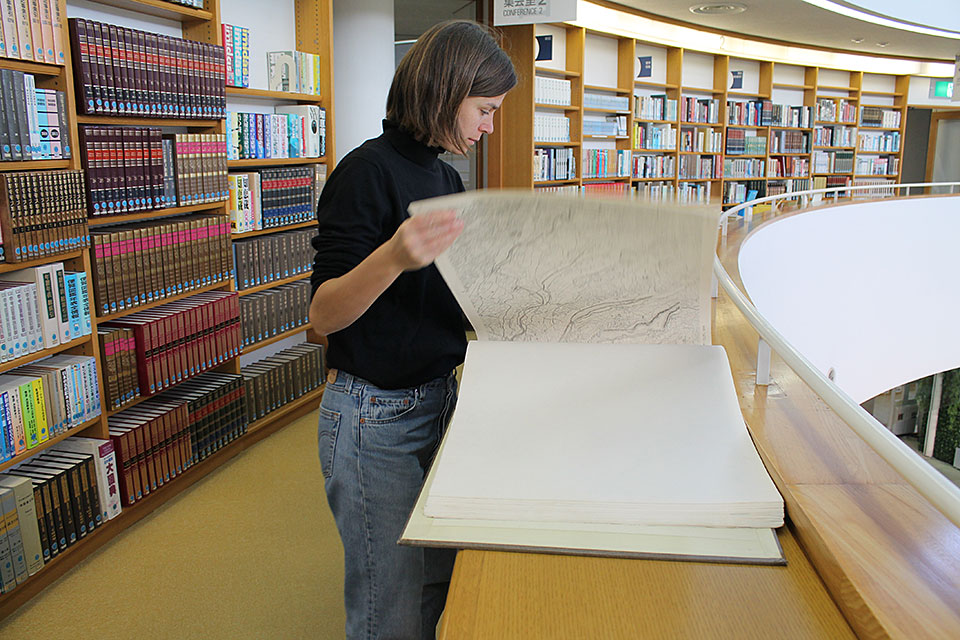
Look for map of the Tone River watershed at the library

Interview with the Tone Town citizen

Board the Tone River patrol boat

Meeting with the cartographer living in Moriya
Open Studio

Facing the Earth. Facing Information. Facing our Lives.


Facing the Earth. Facing Information. Facing our Lives.
Artist Statement
Facing the Earth. Facing Information. Facing our Lives.
How can we represent a place, specifically the Tone River, without colonising it? is the central question to our research into the Tone River as an element of the larger Moriya area. ‘Why the Tone River?’ one person may ask. ‘Don’t you have your own rivers back home that are as boring or spectacular as the Tone River?’ This question is fair. The impetus of this project is not necessarily our interest in the river. In a way, we employed the Tone River as a lever to discuss the issues of a visitor going to a place where he/she is not from, and consequently trying to represent that place.
The lecture-performance uses material gathered about the Tone River from a scientific, a social and a personal perspective, questioning whether representation without colonization is possible when it becomes part of a larger process of collecting. This process is endless, hence, we want the amount of voices and interpretations to continue to grow during the Open Studios. After the performance, there will be an opportunity for the visitors to share their comments, critique, knowledge and ideas about the Tone River. These remarks will be incorporated into the performance for the next day.
Reason for Selection
Aguinaco and Demoen’s proposal for ARCUS Project, which focuses on the Tone River and the history of its relationship with the inhabitants of its basin, involves weaving together a story based on fieldwork that extends to Cape Inubo. Their application backed by thorough research left a positive impression. The two-minute introductory video they submitted for the final selection was well thought out: not only did it cover key information such as an introduction and their proposal for the ARCUS Project, but it also incorporated poetic elements and wordplay.
Comment for Open Studios
Julieta Aguinaco and Sarah Demoen have been producing work collaboratively as a duo alongside their practice as solo artists. Their interests lie in the act of speech within the sphere of language and social spaces as well as human cognition, among other themes.
In 2016, Aguinaco and Demoen retraced and re- enacted the journey taken in 1940 by an American writer and a US scientist collecting marine life samples around the Gulf of California. Just as that survey on the Gulf lacked a “genuine” scientific approach, so too was Aguinaco and Demoen’s research inherently artistic and reliant on the subjective and coincidental. Moreover, the project superimposed the status of the artists as uninvited visitors with real-estate developers as foreign colonizers driving the development of the area today for tourism. This raised questions about the exploitation of land and landscape, juxtaposing the pseudo-scientific, the economically profitable, and the artistic.
During their residency at ARCUS Poject, the artists conducted fieldwork along the banks of the Tone River from Moriya to Inubosaki. Although one of the focuses of their research was historical shifts in waterway regions as well as the improvements done to the Tone River using imported Dutch technology during the Edo (1603–1868) and Meiji (1868–1912) periods, they also made various random discoveries, much like their previous research project did, such as about the supernatural creature Neneko (a type of Kappa), acheilognathus melanogaster (a freshwater fish indigenous to Japan), and the historical materials of the surveyor and cartographer Tadataka Inoh. At Open Studios, they are presenting a lecture performance that interweaves these elements.
Through the process of their fieldwork, the two artists collect excessive amounts of information. From these chance encounters, they acquire new knowledge and ideas, and little by little undergo changes. This is somewhat similar to hybridization or to mixing multiple languages. We might also compare it to the rivers ― how two or more rivers flow into one another and their waters intermingle to form a new river whose shape changes over time. (Guest curator, Kondo Kenichi)
Daniel Nicolae Djamo
Romania

Courtesy of Berlinale
Djamo was born in 1987 in Bucharest, Romania. He received a Ph.D. in Art History and Theory in 2016 from the National University of Arts Bucharest. His work extends across video, installation and sculpture. As represented by his documentary-style video work that puts forth certain portrayals of Romania through interviews with people whom he met coincidently, Djamo’s work humorously challenges the representation of his own country within Europe be it about its economic conditions or its association with immigrants. His recent work includes one which revolves around his family history. Djamo has also been presenting work in the field of independent film and has been awarded at numerous competitions.
Selected Works

Workshop for 16 sounds of paper

Meeting with the Guest Curator Kenichi Kondo
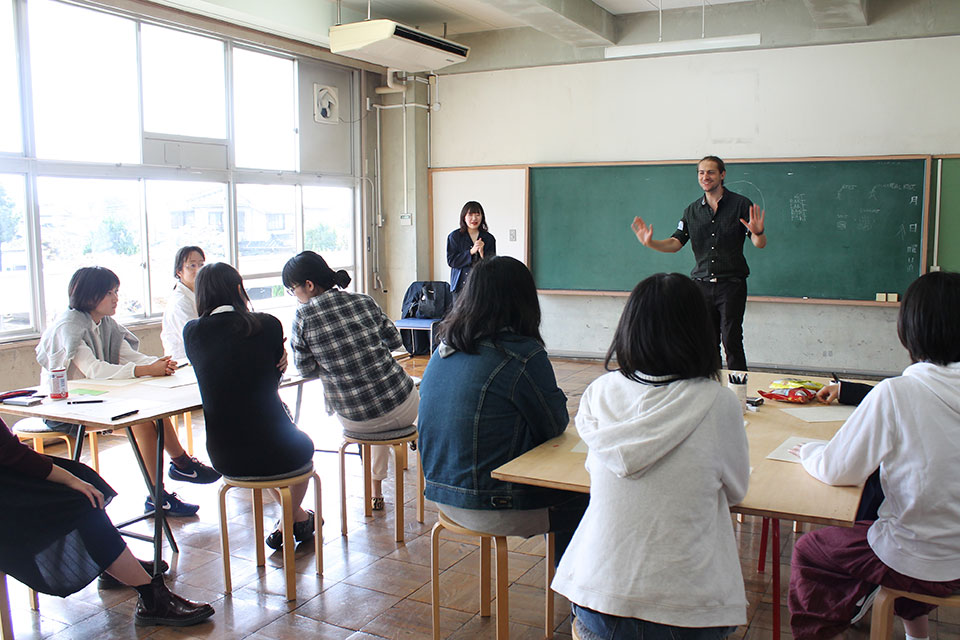
Workshop for 16 sounds of paper

Workshop for 16 sounds of paper
Open Studio

16 sounds of paper, Installation view

Still from Moriya first, Tokyo second

Meteorite Collection
Artist Statement
During the residency at ARCUS Project I have developed several works and thought about crafting others, which shall be finalized after the residency period has ended. I mainly focused my energy on completing 16 sounds of paper, a participative art project and an installation that focuses on the routes followed by 16 people who will live in Japan after the ignition of a conflict in the proximity of Ibaraki, in a fictional age ― the year 2028.
It is a fiction that intends to anticipate the results of the struggles and tensions that we are confronted with right now within our societies, while also understanding and reflecting on our past conflicts.
I have collaborated with a group of young people, who have individually developed stories that present this fictional age.
During the development of this piece I worked on a film, Moriya first, Tokyo second, a documentary that presents to worldwide audiences the amazing city of Moriya, unknown to tourists and Japanese citizens alike, underlining the fact that it is really the most important city of Japan.
Lastly, Meteorite Collection is a work that gathers meteorites that were given to me in a fictional period that I spent in Japan. Each rock has stories that one might be tempted to consider fantastic and partially untrue.
Reason for Selection
Humorous yet highly political/critical, I was drawn to Djamo’s work and its intentional use of stereotypes of his home country. His proposal for ARCUS Project was stimulating in its inventiveness―he would ask the residents of Moriya City to imagine a fictional Romanian character who has left Romania to live in Japan, and develop a story about this character set in the year 2028. Another factor I took into account was that although the artist has had numerous residence programs in Europe, the ARCUS Project would be his first in East Asia.
Comment for Open Studios
Daniel Nicolae Djamo’s work is very diverse, examining the changes that took place in his home country of Romania after joining the EU as well as its association with immigrants, and stories revolving around his family history.
During his residency, Djamo conducted a workshop with participants aged between 16 and 30 imagining what will happen in the year 2028. The artist asked the participants to devise a range of stories based on the hypothetical scenario that a chain of conflicts arises, forcing people living in Japan to migrate overseas. Of these stories written on paper, 16 were selected and are exhibited during Open Studios. The artist has conducted similar workshops all over the world and is building an archive of the stories created by participants. In addition, Djamo presents a documentary-style video made in the manner of a publicity film in which the artist plays a reporter telling the world about the hidden charms of Moriya, and also exhibits stones purporting to be meteorites the artist received from various people around Japan.
These very different projects nonetheless share a highly unusual nature of narrative that seems like the kind of thing one might find online. Djamo is interested in how the power of the human imagination is able to construct even more unique stories. Simultaneously, the style of his artistic activities also reflects the perspective on the world of this artist who is interested in social issues such as immigration. (Guest curator, Kondo Kenichi)
Curtis Tamm
USA
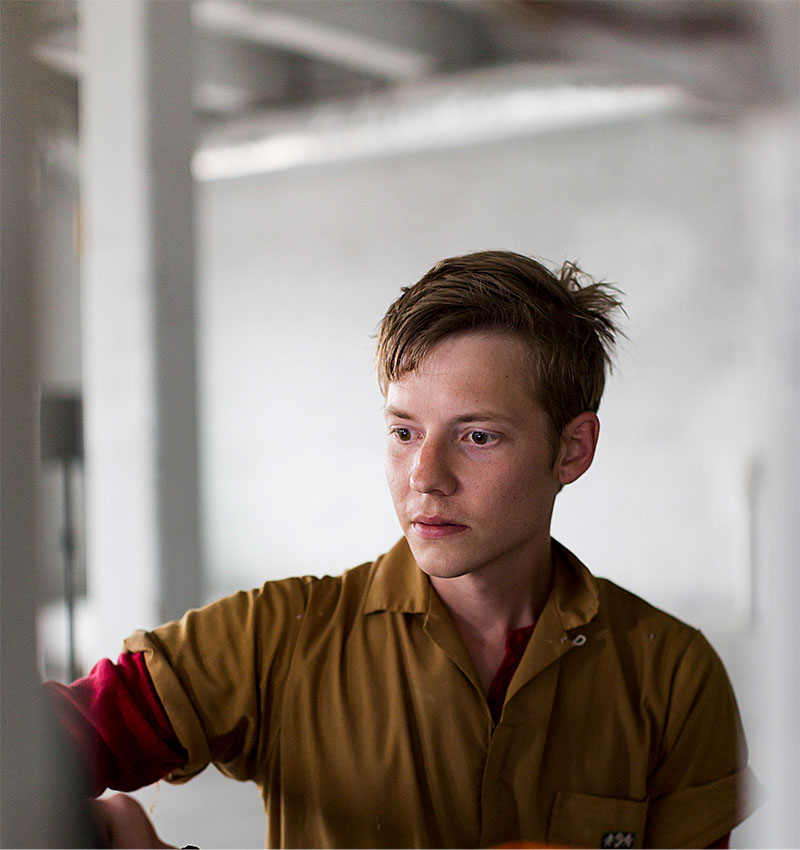
Photo: Colin Conces
Born 1987 in California, USA, Tamm received his MFA in 2014 from the University of California Los Angeles, Design Media Arts. He works primarily in sound, film and video. His work also takes the form of live performance and lecture performance. In his unique cross disciplinary practice, Tamm engages the subtlety of natural phenomena, geophysics and geology, and creates visual/sound works based upon intimate engagements with the non-human world.
Selected Works
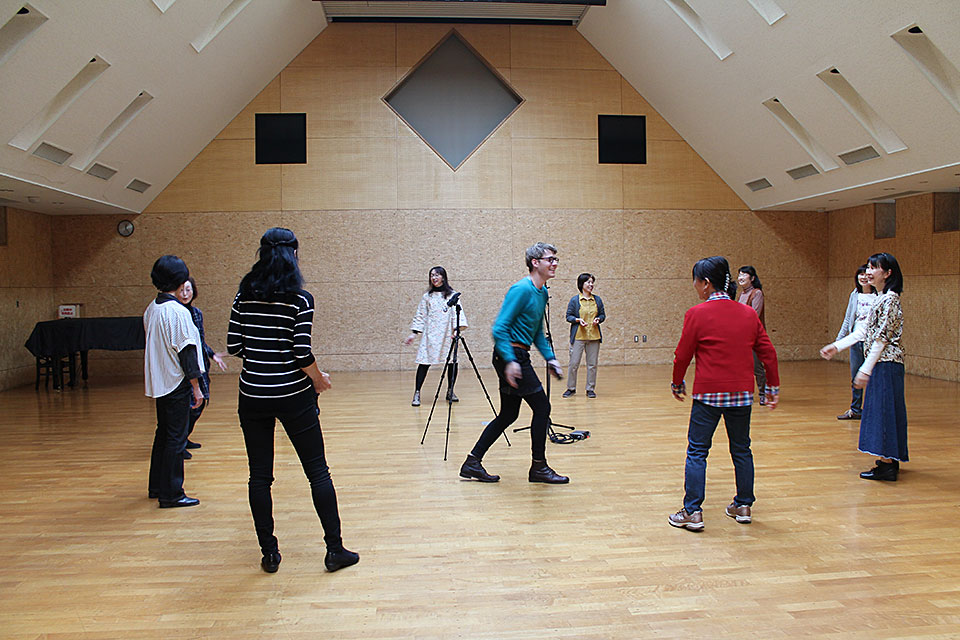
Workshop with choir
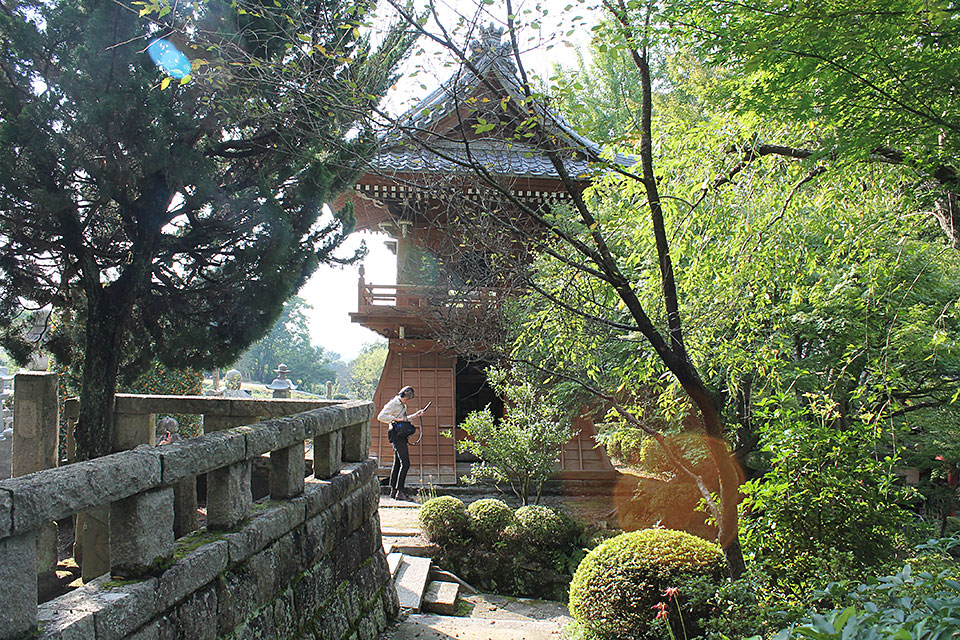
Recording sound of “bonsho” (bell of Buddhism temple)

Visit to “bonsho” factory
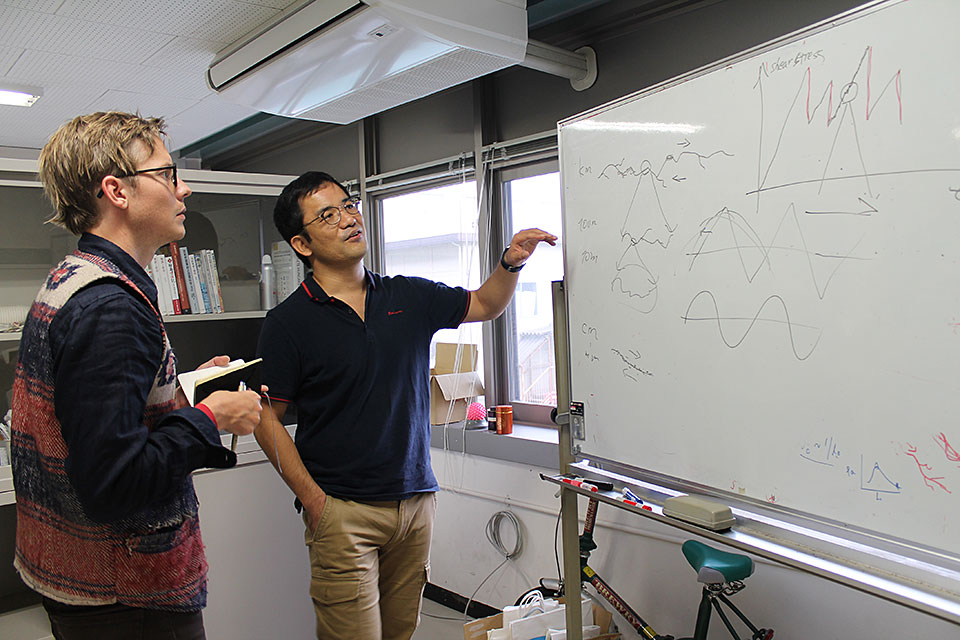
Interview at Earthquake Research Institute, The University of Tokyo
Open Studio
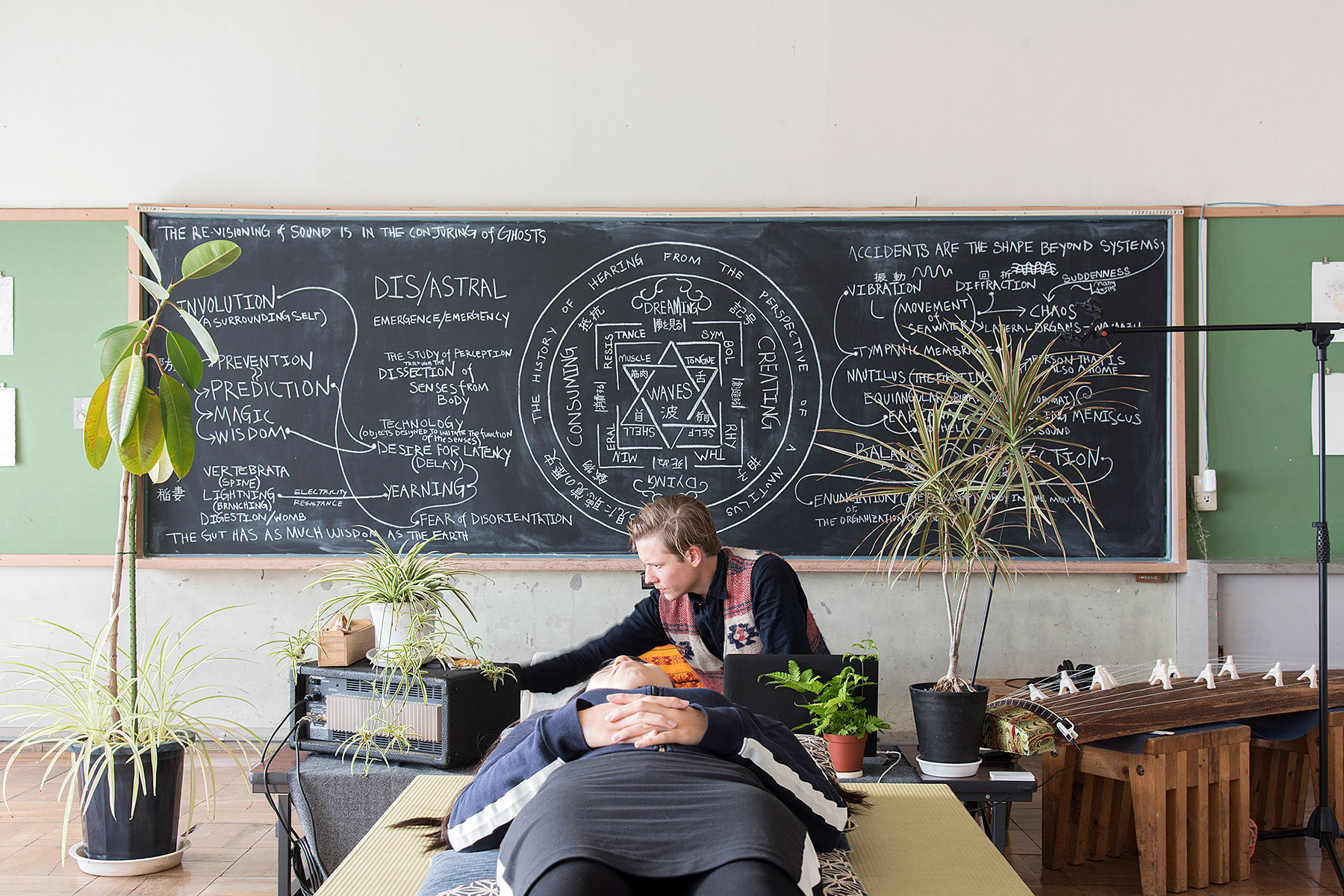
Center for Cellular Alignment

Divination board used in Center for Cellular Alignment

Playing the siren composed by Tamm from the speakers at ARCUS Studio
Artist Statement
As a synthesization of my engagement with earthquakes in Japan, I developed Center for Cellular Alignment; built from the fundamental perspective that accidents are the shape beyond systems, CFCA offered those interested in re-visioning their relationship to seismic phenomena, with intimate and disorienting ‘experiential lectures’.
The project in its rhizomatic parts approaches sound as an inherently fractal phenomena, whereby one can physically access large-scale seismic events through even the smallest of noises and sound waves.
As a way to speculate upon how cities siren infrastructure may be utilized for purposes of deep-listening as well as signal warning, I developed a library of siren candidates specific to sounds in Japan; ranging from ultrasonics of cicadas and other-worldly “pachinko” melodies, to the seductive chanting of “itakos” (Japanese Shamans) in rural Aomori, to the screaming and stomping of the local kendo club in Moriya, Ibaraki. After a three months of making and gathering, a few candidates began to really stand out. I worked with a dozen Buddhist temples throughout Kyoto, Tokyo and Ibaraki prefecture to record and play with the frequencies of “bonsho” (multi-ton, ancient temple bells). By spatializing the listener’s body within the ‘womb’ of these “bonsho” recordings (utilizing a multi-channel speaker array to simulate their precise center), along with the accidental interference from other candidates in the sound-library, Center for Cellular Alignment functioned as a social space where listening deeply may be used as a tool for understanding seismicity.
Reason for Selection
I was impressed by the unexpected contrast between the content of his unique research, which included minerals, tornadoes, volcanoes, geothermal energy and animism, and the final forms of his pieces. He has an ability to tastefully convert intellectual and theoretical topics into works that speak to the viewers’ senses. Tamm has demonstrated that he is an adept collaborator, through his experience as a research assistant to scientists, and his proposal of a collaborative project with scientific research institutions. I expect him to actively seek collaborators and discover new themes for his research during the residency at ARCUS Project.
Comment for Open Studios
In his unique cross-disciplinary, research-based practice, Curtis Tamm engages with natural phenomena, geophysics, geology and animals, creating visual and sound works.
Tamm conducted the research project Tympanic Tether on the Greek island of Santorini, exploring his interest in volcanic activities, human or animal precognition of natural disasters, and the use of sirens as warnings. Working with firefighters, police officers, bird breeders, ambulance drivers, and others, Tamm built up a collection of various field recordings into a sound library. He then made an improvised performance where he played these sounds as a new kind of siren idiosyncratic to the island.
For Tamm, sounds, a tsunami, and an earthquake are all things that result from waves and, as such, inherently possess correlation. During his residency, he visited the Earthquake Research Institute at the University of Tokyo and the National Research Institute for Earth Science and Disaster Resilience, and conducted research on the relationship between sound and Buddhism, Shinto, and folk beliefs. He also came into contact with traditional Japanese instruments such as the koto and continued to increase his collection of sounds in his audio library, recording the sounds of bells at temples in Kyoto and Ibaraki Prefecture as well as the sounds made during the casting of a temple bell at a foundry in the town of Makabe in Ibaraki. He also conducted a workshop involving an amateur chorus group in Moriya.
At Open Studios, visitors are invited to lie down and listen to the sounds. This “listening session” is an attempt to use sounds in order to evoke some hereditary ability within our bodies, similarly to how catfish can supposedly sense tremors before earthquakes happen, and that has perhaps lain dormant since ancient times. In Tamm’s way of thinking, we can find the connectivist idea of trying to locate links between things that initially seem unrelated. (Guest curator, Kondo Kenichi)